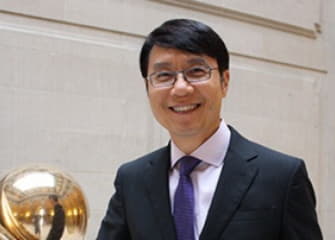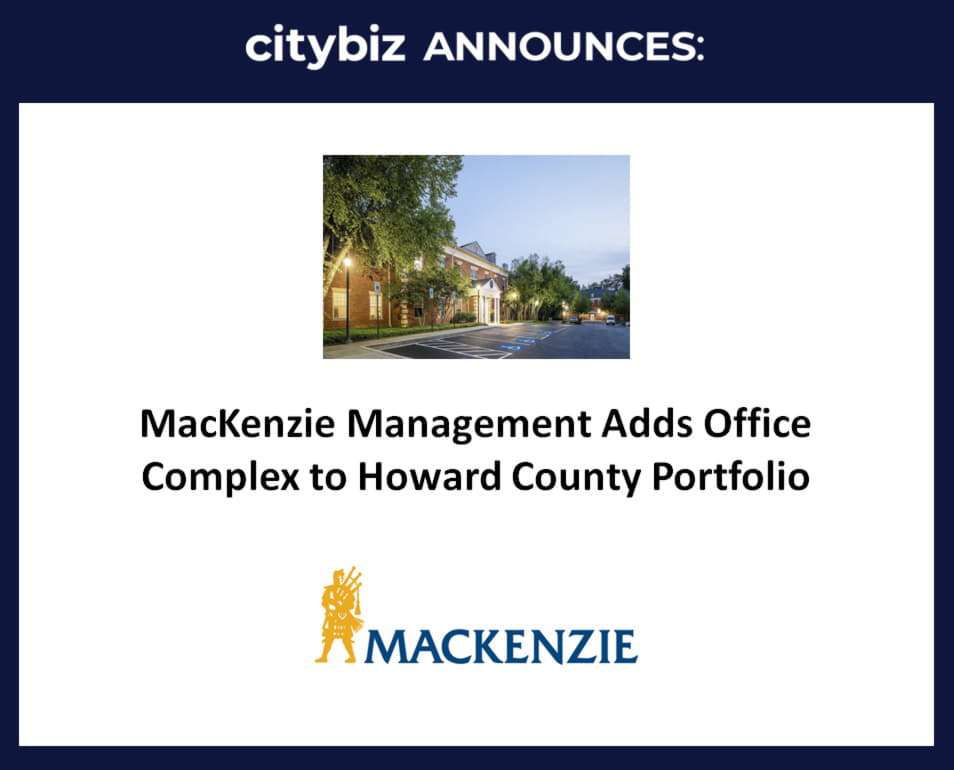
Samuel Hoi
Click here for Part I & Part II
Though he says it was a matter of happenstance that he stumbled upon arts college management while studying illustration at Parsons School of Design, MICA President Samuel Hoi admits it was the “bliss” he’d been looking for after an unfulfilling law school experience.
Since arriving at MICA in 2014, Hoi has been intent on building upon the legacy of his predecessor Fred Lazarus, with a focus on pivoting the College into new areas of art and design that will meet the challenges and standards of the emerging creative economy.
Among those initiatives, Hoi has overseen the MICA’s curricular expansion into new programs such as Game Design and Product Design. Both B.F.A. programs launched this September, and will be housed, along with Architectural Design and Interactive Arts, in the new state-of-the-art Dolphin Design Center, a building that Hoi believes will be a hub of innovative design practice for the 21st century.
“MICA’s mission is to empower our students to forge creative, purposeful lives and careers in a diverse and changing world. We believe that creatives can and should play an active role in being change agentsin the world for the common good,” said Hoi.
But, MICA’s goals are not limited to its own success. The recently announced Baltimore Creatives Acceleration Network (B/CAN) is an initiative spearheaded by MICAto provide a network of support and professional resources for Baltimore’s community of creatives and entrepreneurs interested in starting their own businesses.
“We want to stimulate the creative economy in Baltimore in such a way that the city is for the better, and that it’s not only pervasive and powerful but truly equitable at the same time.”
As MICA closes in on its bicentennial in 2026, Hoi is committed to the College’s decisionto further incorporate entrepreneurship into its teachings, and to reinvent theart and design schoolmodel in a way that students will not only benefit but thrivein the creative economy.
“At MICA, we are educating a new breed of wide-angle, wide-impact artists and designers, who will use their art and design thinking to make a much broader impact in a whole host of other disciplines and areas than just the traditional arenas of galleries and design studios,” said Hoi.
Founded in 1826, Maryland Institute College of Art (MICA) is the oldest continuously degree-granting college of art and design in the nation. The College enrolls over 3,000 undergraduate, graduate and continuing studies students from 49 states and 65 countries in fine arts, design, electronic media, art education, liberal arts, and professional studies degree and non-credit programs. With art and design programs ranked in the top ten by U.S. News and World Report, MICA is pioneering interdisciplinary approaches to innovation, research, and community and social engagement. Alumni and programming reach around the globe, even as MICA remains a cultural cornerstone in the Baltimore/Washington region, hosting hundreds of exhibitions and events annually by students, faculty and other established artists.
EDWIN WARFIELD: Can you frame MICA’s role in the context of the creative class in the gig economy?
SAMUEL HOI: Yes, happy to do that. I would frame it even a little larger. Richard Florida’s creative class as a concept as covers more than just the artistically creative class; it’s also the technologically creative class. While MICA’s core expertise is more in the art and design base, the way that we think that our graduates, faculty, staff—everyone at MICA—can participate is [in line with] MICA’s mission to empower our students to forge creative, purposeful lives and careers in a diverse and changing world. We believe that the creatives can and should play active roles in being change agents in the world for the common good. That common good is not only in the cultural arena, as people like to pigeonhole artists and designers—you know, “go put your work up in the gallery,” “go to a graphic design studio and design these books.” At MICA, we actually are educating a new breed of what I like to call “wide angle, wide impact” artists and designers who will use their art and design thinking and skills and making skills certainly in the traditional arena of gallery and graphic design studios, but for those who are capable, they can also make a much broader impact in a whole host of other disciplines in an area. This is the kind of creative class that MICA wants to educate and help mobilize.
In our view, many artists and designers are by nature very comfortable with freelance careers. In a way, before the gig economy even had its name and its reality, we can think of artists and designers being the precursors of the current gig creative class. If you think of MICA re-educating this new breed of creatives, and the current economy, we need their expertise and flexibility and their solutions to address larger issues and opportunities in cultural, social, economic, and environmental areas.
Q. Where is MICA in five years, and where are you?
A. Actually, I will tell you about MICA in nine years, because in 2026 MICA is going to celebrate its bicentennial. We are going to be 200 years old in 2026, and that seems like a wonderful milestone for us to set in front and to say, “Where do we want to be at that time?” I think a lot of our projects—and we want to be realistic—a lot of what we want to do will take some time. For product design and game design to fully manifest as successful programs, it’s not overnight, but for BCAN to be successful—and BCAN is launched now—its cumulation, when it sunsets, is just around the time of the bicentennial. How wonderful it would be when MICA celebrates its two-hundredth year we can look back and say we have helped stimulate an equitable, powerful, creative economy in the city. MICApreneurship, hopefully by that time, would have 10 classes or 12 classes of participants. They would have populated not only here, but across the country and maybe around the globe. To say that this is very ambitious embracement of entrepreneurship into art and design education has actually redefined art and design education, redefined return in investment, have empowered the creative population in a way that NEA has always intended to do. I would say MICA would be at a place that we would have reinvented the art and design school model. I think that we would be in a place that we have figured out how to be a responsible private school, because as a private school we’ll never be free and there’s been much criticism about the rising cost of college education. Where MICA is currently intentionally looking at and trying to do is to figure out a consistent, responsible, predictable way of tuition increases, and at the same time answering the return in investment question in a very powerful way, so families who send students here know exactly what they will get out of the school and that the answer is not about the first job they will get—maybe not about the salary they’re going to make—but about the lives they are going to forge ahead that will be meaningful. They can sustain a livelihood, but just like my going to law school and finding it miserable and going to the arts and finding my bliss, they will find a bliss in a way that they can sustain their lives and make a contribution to other people’s welfare and to social society’s well-being.
I would say in 10 years’ time, when MICA celebrates its bicentennial, we would have a lot of these things figured out. We would be one of the most innovative art schools in the world and that there will be a viable concern going forward that we can continue to innovate, that we would have figured out a new business model for higher education, and that we would have stimulated the great economy in Baltimore in such a way that the city is for the better—and also that it’s not only pervasive and powerful, but truly equitable at the same time.
Sponsored by:
Founded in 1969, KatzAbosch is one of the largest CPA and business consulting services in the Mid-Atlantic region. Our mission is to provide the highest quality accounting, tax, financial and management consulting services to our clients. We understand the needs and challenges of our clients and we have made it our obligation to create, grow and protect asset value. The experts at KatzAbosch offer a full service solution while maintaining a tradition of ethics and incorporating the latest technology and unique business practices. Excellence in an industry often begins with how those closest to the company—its clients and employees—feel about it. For these individuals, KatzAbosch is a place where people and businesses excel and prosper. Our advisors can meet all of your service needs including; Audit & Accounting, Business Valuation & Litigation Support, Consulting, Estate Planning & Administration, Financial Institution Services, Forensic Accounting & Fraud Examinations, State and Local Tax (SALT), Taxes & Planning.


Edwin Warfield, CEO of citybizlist, conducts the CEO Interviews.
If you're interested in reaching CEOs, please contact edwin.warfield@citybuzz.co
Connect on LinkedIn




































